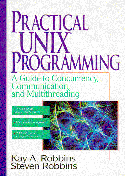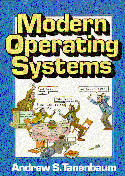
 CS 3733 Operating Systems
CS 3733 Operating Systems 
 CS 3733 Operating Systems
CS 3733 Operating Systems
Reading: Tanenbaum pages 33-38 (Section 2.2)
item buffer[n];
int in,out,counter;
in points to the next free bufferout points to the first full buffer counter contains the number of full buffers.
Pool is empty when counter = 0 and is full when
counter = n.
Producer loop:
produce an item in nextp while (counter == n) ; buffer[in] = nextp; in = (in+1) % n; counter++; in = (in+1) % n; counter++;Consumer loop:
while (counter == 0) ; nextc = buffer[out]; out = (out+1) % n; counter--; consume the item in nextc
Although each routine is correct by itself, they do not function
correctly when run concurrently. How are
counter++ and counter-- implemented?
PROCESS 1: PROCESS 2:
while(TRUE) { while(TRUE) {
while (turn != 0) ; while (turn != 1) ;
turn = 1; turn = 0;
} }